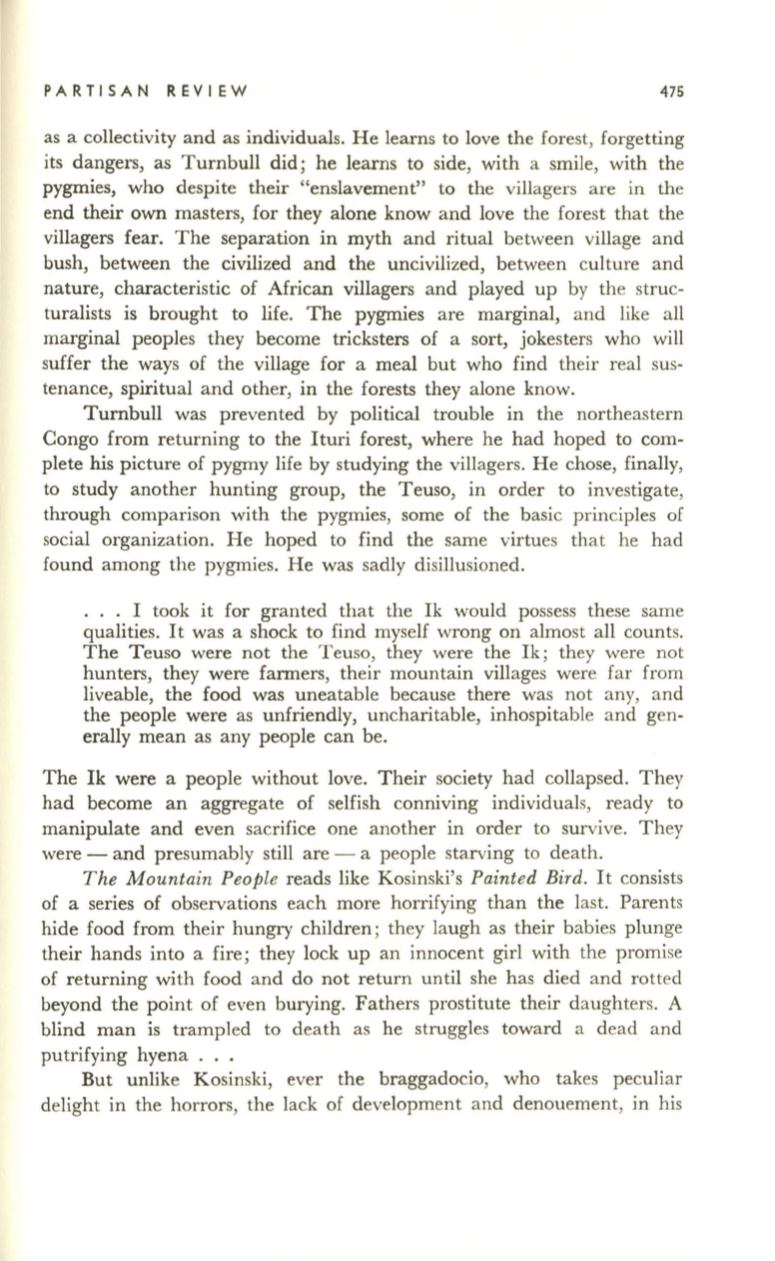
PARTISAN REVIEW
475
as a collectivity and as individuals. He learns to love the forest, forgetting
its dangers, as Turnbull did; he learns to side, with a smile, with the
pygmies, who despite their "enslavement" to the villagers are in the
end their own masters, for they alone know and love the forest that the
villagers fear. The separation in myth and ritual between village and
bush, between the civilized and the uncivilized, between culture and
nature, characteristic of African villagers and played up by the struc–
turalists is brought to life. The pygmies are marginal, and like all
marginal peoples they become tricksters of a sort, jokesters who will
suffer the ways of the village for a meal but who find their real sus–
tenance, spiritual and other, in the forests they alone know.
Turnbull was prevented by political trouble in the northeastern
Congo from returning to the Ituri forest, where he had hoped to com–
plete his picture of pygmy life by studying the villagers. He chose, finally,
to study another hunting group, the Teuso, in order to investigate,
through comparison with the pygmies, some of the basic principles of
social organization. He hoped to find the same virtues that he had
found among the pygmies. He was sadly disillusioned.
. . . I took it for granted that the Ik would possess these same
qualities. It was a shock to find myself wrong on almost all counts.
The Teuso were not the Teuso, they were the Ik; they were not
hunters, they were farmers, their mountain villages were far from
liveable, the food was uneatable because there was not any, and
the people were as unfriendly, uncharitable, inhospitable and gen–
erally mean as any people can be.
The Ik were a people without love. Their society had collapsed. They
had become an aggregate of selfish conniving individuals, ready to
manipulate and even sacrifice one another in order to survive. They
were - and presumably still are - a people starving to death.
The Mountain People
reads like Kosinski's
Painted Bird.
It
consists
of a series of observations each more horrifying than the last. Parents
hide food from their hungry children; they laugh as their babies plunge
their hands into a fire; they lock up an innocent girl with the promise
of returning with food and do not return until she has died and rotted
beyond the point of even burying. Fathers prostitute their daughters. A
blind man is trampled to death as he struggles toward a dead and
putrifying hyena . . .
But unlike Kosinski, ever the braggadocio, who takes peculiar
delight in the horrors, the lack of development and denouement, in his


